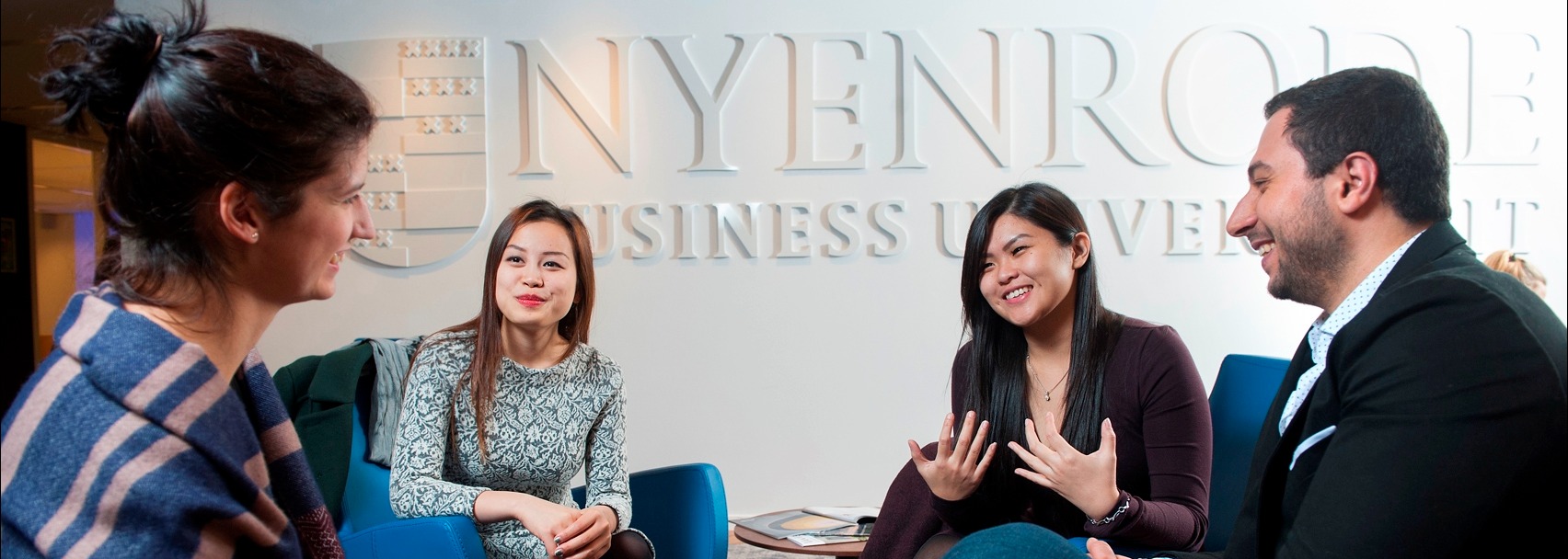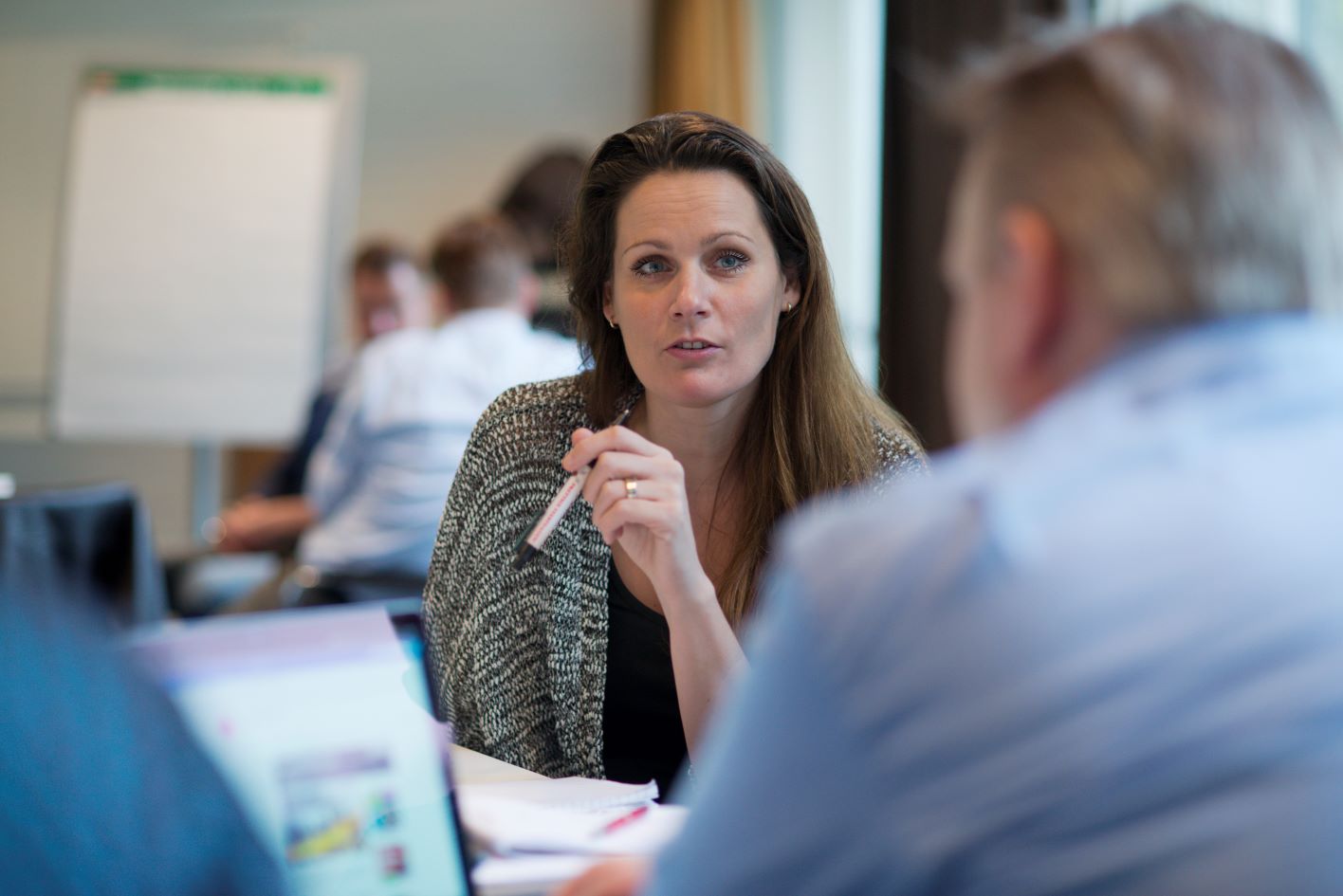These are the steps HR needs to take to create an engaging company culture.
To be able to attract and retain people in the current tight labor market, it is necessary to improve the employee experience. But how exactly do you do that? What are your first concrete steps? Nick van Dam, Professor at IE Business School and Nyenrode Business University and Academic Director of the International program: Global HR Leadership Diploma Program, has clear ideas about this.
“We live in a fascinating time and HR has to pull out all the stops,” van Dam starts enthusiastically. “We are experiencing a big reset in work and in the workplace, which has been accelerated by serious changes in people’s attitudes about work itself. It plays on all levels, with themes such as leadership, inclusivity, flexibility, learning climate, mental health, vitality, data, and analytics. The changes we are facing have accelerated by 10x compared to pre-Covid. At the same time, there are far too few people to fill specific jobs in many geographies, and that is not getting any better. The Great Resignation casts appears to forecast the future and HR needs to prepare for that. The culture of many organizations must change in order to attract and retain talented people. A culture that provides psychological safety, is human, engaging, is clear about its meaning and purpose, and supports personal learning and growth. But how is that to be done? What exactly does HR need to do to achieve this? Fortunately, Nick van Dam has a practical step-by-step plan. These are the steps HR needs to take to create an engaging company culture.
Step 1: Start with the leaders
As a human resources professional you need to recognize that you are positioned between the organizational leaders and the employees. Both need your attention. “But culture is first and foremost about leadership,” van Dam emphasizes. “Better leaders make for a better culture. However, there is often a significant difference between what leaders say, and what they do – and how it is experienced by others. And frequently leaders are unaware of this.”
It is therefore important to provide the leaders with self-insights from a 360-degree feedback instrument. This way it becomes evident how your leaders are doing. “Do they really pay attention to their people, inspire others, show exemplary behaviors, and give constructive feedback or do they micro-manage? If you do not look at how your leaders are shaping the culture, and adjust this to the desired cultural goals and outcomes, you can forget about pursuing further improvements,” argues Van Dam.
For a change of culture, you need a safe environment, he emphasizes. People must dare to speak up and the leaders must embrace that process and ideally, they should even take the lead in it. “That’s why everything you do starts and ends with the leaders. They must actually listen and be open to feedback from their employees, peers and leaders and that should be apparent to everyone in the organization.”
Step 2: Know your organization
A better corporate culture does not start with a directive from the board, says Van Dam. “If you want to be a magnet for talent, generic HR policies won´t make a difference,” he says. “It’s about listening, recognizing achievements, giving real-time feedback, and providing opportunities for growth and development. The foundation is focused attention, every day.” The first step is having a good sense of the people who work for you. Who are they? What do they care about? What motivates them to high performance? What do they need from you?
Van Dam cites the very different perspectives of diverse types of groups, such as people who work in a plant, or who do administrative work, or care for patients in healthcare, or highly educated knowledge workers. Each group has unique and different needs, Furthermore, you have older employees, parents of young children, young people who have just finished their studies. It is important to map the needs of all segments of your workforce.
Be inclusive. “This means looking at all people who support the organization independent of the kind of legal agreement with the company including, full-timers, part-timers, freelancers and suppliers. At the end of the day, it is about keeping everyone connected to your organization. The culture of your organization is determined by everyone together and the challenge is to ensure that everyone feels valued by organization and knows that who they are and what they do matters”.
Step 3: Talk to everyone
Now that you have mapped out who your employees are, you can start to find out what they need. You can do this by reaching out to them, for example by using surveys or one-on-one conversations. But you can also do broader research, for example analyzing the labour market. Why don’t people want to work with us? What do young employees want and are we taking that into account enough? This way you will find out the challenges to engagement people are experiencing.
Put yourself in the shoes of your employees. Ask questions and accept that there are no ´one-size-fits- all solutions. Otherwise, you are going to lose people. “Look at flexible working, for example,” van Dam takes an example. “There are lots of people who will drop out if they have to return to the office again for five days”. But a survey of recently graduated young people showed that they want to work from home for not more than 1 or 2 days a week. They want to get to know their colleagues and their leaders. They want to be coached. Moreover, they often live in small rooms where they no longer want to spend the entire week”.
Step 4: Look for solutions together
There are then several ways in which you can take action. For problems that are experienced more widely, you can, for example, set up a task force that consists of employees who come up with solutions together. It is also important that management is really open for new ideas, because people must feel it is safe to share their personal perspectives. “In this way, the initiatives actually come from the employees in the organization and are not directed top-down,” says Van Dam. “You create HR initiatives that you have developed together.”
But Van Dam also points out that many things are unique for every person and that everyone deals with these in their own unique way. It just depends on whether you are a bit older, whether you have children, whether you have health challenges, a partner or parent who you must take care of, or you have a desire to work on your personal development. “These situations are subject to change and as HR you always want to help your people with whatever they need. This also means that you need to think about ´personalized talent management´. In order to create flexible and adaptive solutions, you really have to get to know the people in your organization.”
Feel the urgency
Regardless of the specific solutions that are developed and implemented, the process of finding and establishing solutions creates a culture of attention for each employee says Van Dam. “But never think you are done with this because your organization is constantly changing. People are changing.” An example of this he cites is a professional services organization where he was recently engaged to help because the turnover was very substantial. The partners were all in their mid-forties and had a clear picture of what a career looked like. Only the image they shared came from the time when they themselves were in their mid-twenties – years of putting everything aside for work and then becoming a partner. “But it doesn’t work that way anymore for everyone. A growing number of people who are part of Gen Z or the tail end of the Millennials look at a career differently. They don’t what to set aside their life for work. They want to spend time with friends, sports, travel, and combine that with work.”
Forcing people to adapt to a specific culture or career is not going to work anymore. Van Dam suggests that you only have two choices: listen to your people and adjust your culture or accept a significant employee turnover. “But,” he adds, “if you think the labor market is tight right now, just wait. It does not get any better. So, for HR, it is now a matter of pausing and stepping back! Really taking time to talk to the people in your organization. You have to make this your number one priority.”
Nick van Dam is an internationally recognized thought leader, advisor, researcher, facilitator, and best-selling (co-) author of more than 27 books on Corporate Learning, HR and Leadership Development.
He is a Professor at IE University, Nyenrode and the University of Pennsylvania. Van Dam is the Academic Director of the Global HR Leadership Diploma Program. He is affiliated with McKinsey & Company as an external senior advisor and faculty member.
Related programs
-
Global HR Leadership Diploma Program
Start date: May 15, 2025Language:- English
Location:- Amsterdam
- Other...
The world of HR is changing. A 6 Months Blended Learning Journey To UNLOCK Your Potential
View program
-
Global L&D Leadership Diploma Program
Start date: 11 September 2025Language:- English
Location:- Amsterdam
- Online
- Other...
Get new insights on how organizations can be more effective and efficient in developing their people by following the Global Master Program: L&D Leadership
View program
-
Change Management and Organizational Development
Start date: September 18, 2025Language:- English
Location:- Breukelen
The module Change Management and Organizational Development is part of the Modular Executive MBA Business & IT and focuses on managing in a changing organization.
View program
-
Change Management and Organizational Development
Start date: Start Autumn, 2025Language:- Dutch
Location:- Breukelen
This module is only given in Dutch. Please visit our Dutch site.
View program
